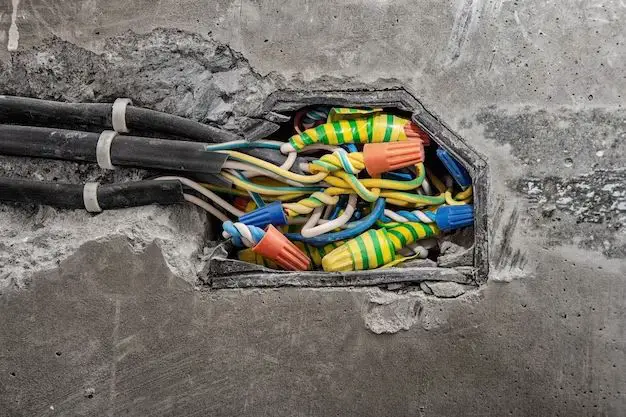Page Contents
Quick Answer
Yes, you can install electrical junction boxes in walls as long as you follow proper safety precautions and electrical codes. Junction boxes contain and protect electrical wire connections, allowing you to branch and reroute circuits. Proper installation ensures the junction box is securely mounted, wires are properly connected, and the box remains accessible for maintenance.
Installing a Junction Box in the Wall
Installing a junction box in a wall involves several key steps:
Choosing a Suitable Junction Box
– Pick a box rated for the number of wires and connections it will contain. Overfilled boxes can lead to overheating.
– Choose a box with clamps or screw terminals to securely hold wires.
– Use a box with adequate cubic inch capacity for the wires entering it.
– Metal or plastic boxes are common. Consider a fire-rated box if installing near flammable materials.
Positioning the Junction Box
– Junction boxes must be accessible, so don’t bury them inside the wall cavity. Leave room to open the cover.
– Position the box close to the location where branch circuits split off or wires intersect.
– Mount the box level and plumb with wall surfaces. Securely fasten to structural framing or a wall brace.
Installing and Securing the Box
– Cut a hole in the wall material to fit the junction box. Position the box and attach securely with appropriate fasteners.
– Feed cables into the box, leaving 6-8 inches of extra wire to make connections.
– Secure cables tightly to the box using clamps or connectors on the box. This prevents strain on wire connections.
Making Proper Electrical Connections
– Use approved wire connectors to join wires. Match wire size and types properly.
– Connect ground wires to the grounding terminal on the junction box.
– Follow codes for cable arrangements and splice insulation.
– Ensure connections are tight and secure, with no exposed conductors.
Completing the Installation
– Organize wires neatly, without excess pressure or tension on connections.
– Affix a suitable junction box cover plate over the opening.
– Label circuits entering the box. Leave room in box for expansion.
– Check that no wires are pinched by the cover and that the box operates safely.
Safety Tips for Junction Box Installation
Proper safety precautions are crucial when working on electrical projects:
– Turn off power at the main breaker panel before starting work. Verify it is off.
– Use a non-contact voltage tester to double check wires are not live.
– Follow all electrical codes and standards applicable to your region.
– Only work on wiring you are qualified and comfortable working with.
– Use appropriate personal protective equipment like eye protection.
– Take precautions against shock and electrocution.
– Get necessary permits and arrange for inspections of finished work.
– Consider having an electrician handle any complex electrical work.
Junction Box Size and Type Requirements
Junction boxes must meet certain size and design requirements:
Minimum Junction Box Size
| Wires Entering Box | Minimum Box Volume |
|---|---|
| Up to 4 | 16 cubic inches |
| 5-8 | 21 cubic inches |
| 9-12 | 27 cubic inches |
– Volume is measured in total cubic inches within the box.
– Larger boxes may be needed to fit splices, connectors, and wires.
Junction Box Construction
– Standard junction boxes are made of plastic or metal.
– Fire-rated boxes are required in some locations.
– Outdoors, use weatherproof junction boxes rated for wet locations.
Clamps and Connectors
– Junction boxes must have clamps, screws, or connectors to secure wires.
– Use approved methods like wire nuts or splice caps for wire connections.
Electrical Code Requirements
Junction box installation must comply with electrical codes, including:
Box Fill Capacity
– The National Electrical Code limits the volume of wires permitted in a box.
– Wires must not overfill the cubic inch capacity to avoid fire hazards.
Number of Wires Permitted
– Code determines the maximum wires allowed based on wire gauge and box volume.
– Typically 8-12 wires are permitted in a standard junction box.
Protection from Physical Damage
– Junction boxes cannot have openings, gaps, or exposed conductors.
– Placement must prevent moisture damage, corrosion, mechanical stress, etc.
Accessibility for Inspections
– Junction box covers must remain accessible for examination and testing.
– Buried boxes or splices are not permitted.
Conclusion
Installing a junction box involves picking an adequate box size, mounting it securely, making safe wire connections, and following electrical code requirements. Proper junction box installation protects wire splices, allows branching of circuits, and prevents electrical hazards. Carefully following safety procedures and regulations ensures correct junction box placement and operation. Consulting an electrician is recommended if you are unsure of any part of the junction box installation process.
